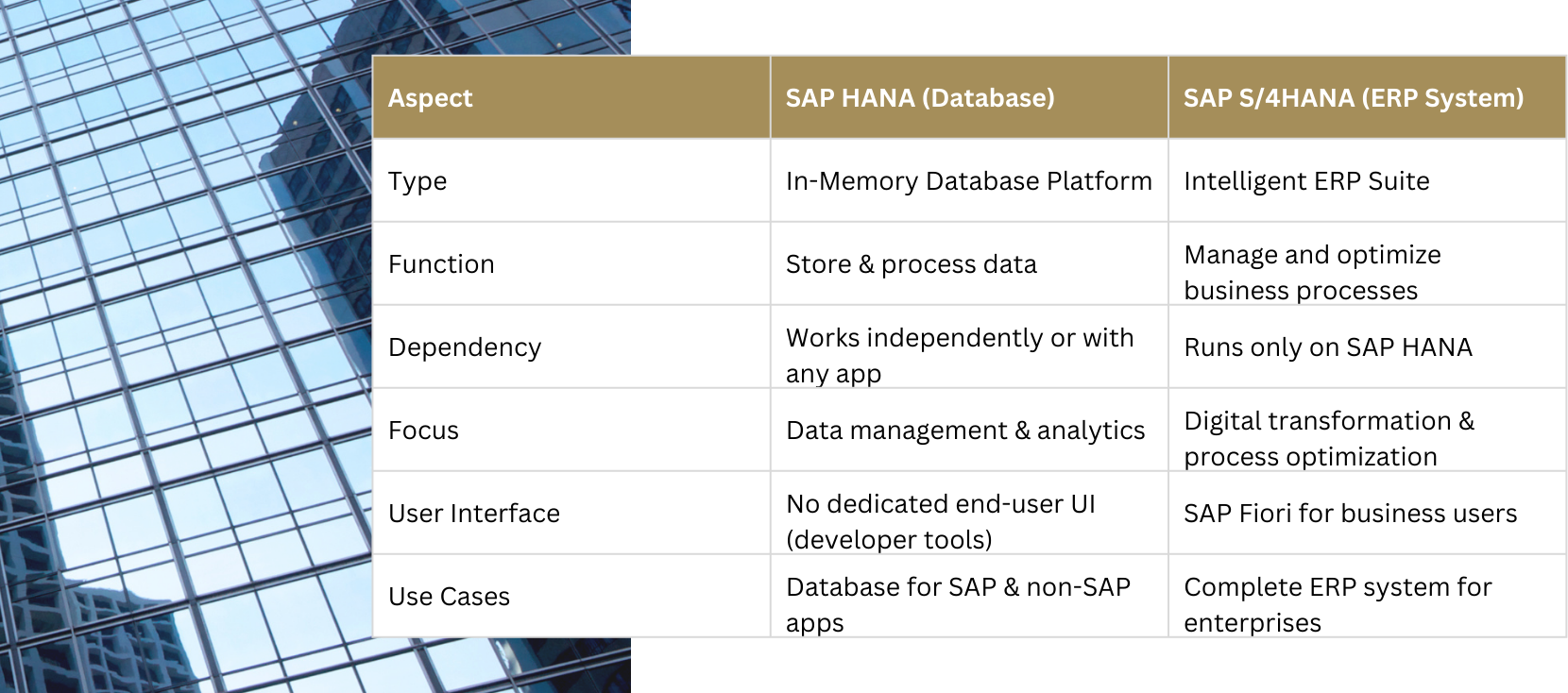
SAP HANA and SAP S/4HANA are two of the most important technologies in the SAP ecosystem – and they are often confused or used interchangeably. Yet, they serve very different purposes: SAP HANA is the database platform, while SAP S/4HANA is the complete ERP system built on top of it.
This guide explains the key differences, highlights the main benefits of S/4HANA, and outlines common migration paths.
SAP HANA (High-Performance ANalytic Appliance) is a revolutionary in-memory database platform developed by SAP to process large volumes of data in real time. Unlike traditional databases that store data on disk and process it row by row, HANA keeps data in-memory and uses a column-based architecture. This enables lightning-fast data access and analytics.
SAP S/4HANA is the fourth generation of the SAP Business Suite (the “S” stands for Suite or Simple, the “4” for the fourth generation). It is designed to run exclusively on the SAP HANA database and integrates core business processes across the enterprise – from Finance and Procurement to Manufacturing and Supply Chain Management.
The core difference lies in their nature: SAP HANA is the database platform, while SAP S/4HANA is the ERP suite built on it.
Think of it like this: SAP HANA is the powerful engine, while SAP S/4HANA is the vehicle that uses it to run.

Migrating to SAP S/4HANA is not a simple upgrade from older ERP versions like SAP R/3 it is a redesign tailored for the digital economy.
Key advantages include:
Moving to SAP S/4HANA is a strategic decision that requires careful planning. SAP provides three common migration paths, depending on system landscape, goals, and budget.
Convert an existing ECC system to S/4HANA.
✔ Quick implementation, historical data preserved
✘ Limited process optimization
Set up a completely new S/4HANA system, migrate relevant data.
✔ Maximum process redesign and innovation potential
✘ More effort, historical data must be archived separately
A mix of Brownfield and Greenfield: Selective migration of systems, modules, or data.
✔ Flexible, phased approach possible
✘ Requires complex planning and specialized expertise
SAP HANA and SAP S/4HANA are closely connected, yet fundamentally different. HANA provides the technological foundation, while S/4HANA is the intelligent ERP suite built on top – designed to simplify and optimize business processes in the digital era.
For enterprises, S/4HANA is more than an upgrade – it is an investment in agility, efficiency, and competitiveness. The right migration strategy is key to unlocking its full potential and ensuring a smooth transition.

Confluence is more than documentation—it’s your team's secret to saving time, cutting c

Work Smarter with AI-Powered Collaboration: Discover how Atlassian Intelligence automat
